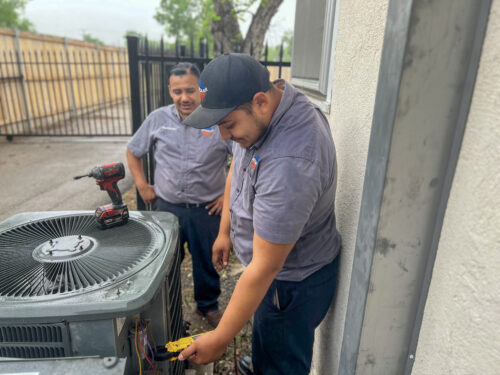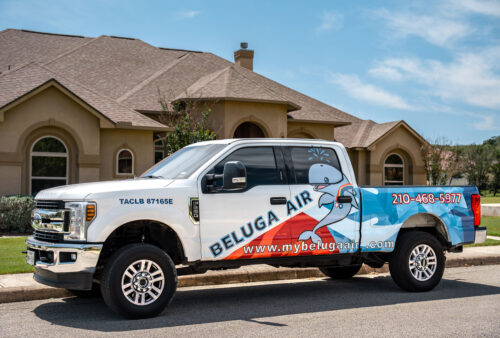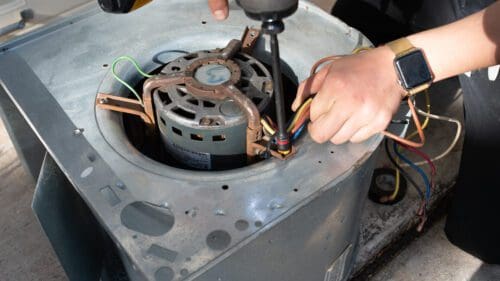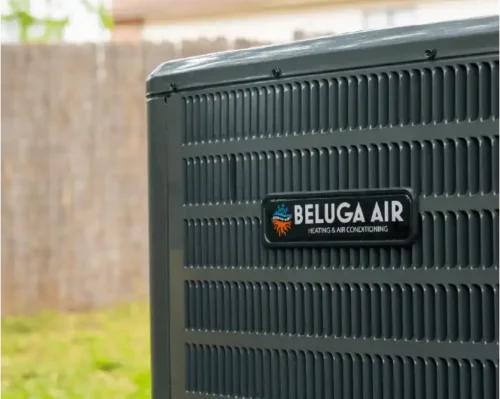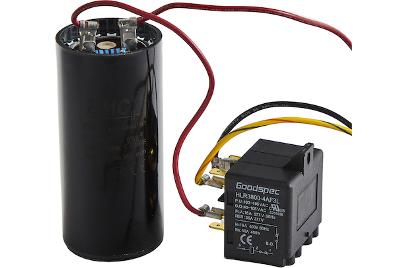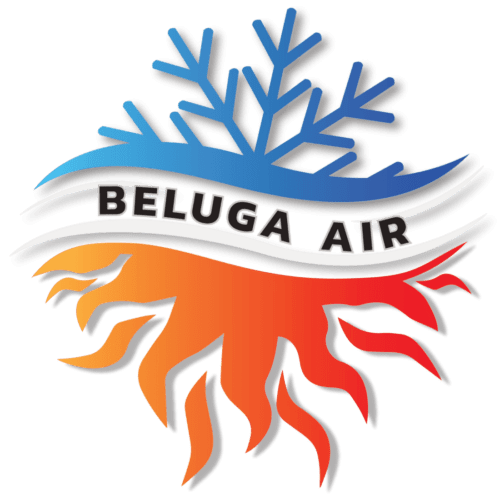Importance of Prepping Your HVAC System
We all know the importance of air conditioning and the comfort it provides during the warm Texas summer. To ensure that your air conditioning system is up to the challenge of keeping your family cool and comfortable, you should prep your HVAC system before the summer heat hits. A prepped HVAC system can not only provide you with improved comfort but cost savings as well.
Here’s how to do it. We’ll cover several steps you can take to prepare your HVAC system for the summer including checking thermostat settings, cleaning filters, clearing outdoor compressor units, and more. Plus, we’ll share when it’s time to call in the professionals. Finally, we’ll provide some tips for regular maintenance and inspections.
So let’s get started prepping your HVAC system for the summer and make sure you stay cool and comfortable in San Antonio!
Benefits of Prepping Your System
When it comes to prepping your HVAC system for the summer in San Antonio, TX, there are many potential benefits to consider. Air conditioning can provide a comfortable living environment during hot summer days, as well as improved air quality by reducing humidity and controlling pollen and dust levels. Additionally, prepping your system in advance can help to avoid costly repairs due to neglected maintenance and prolong the life of your HVAC system. Thus, by taking the time to prep your system before the summer, you will likely see the benefits in both comfort and cost.
How to Prepare Your A/C System for the Summer
In San Antonio, being prepared for the summer means making sure your air conditioning system is up and running. Before the heat of the summer season sets in, it’s essential to make sure your HVAC system is in top condition. Here are a few tips to prepare your HVAC system for the summer:
• Have a professional HVAC technician inspect your system – This will help identify any deficiencies or issues that need attention now before they become bigger issues during the summer months.
• Check to make sure your air filter is clean – Dirty air filters can reduce the life of your air conditioning system and reduce the efficiency of the system.
• Clean the indoor and outdoor coils of your AC system – This is important for the efficient operation of your AC system.
• Make sure the ductwork is clear of obstructions – Obstructions can reduce the efficiency of your air conditioning system.
By taking the time to prepare your HVAC system for the summer, you can ensure that your air conditioning system will be running smoothly and efficiently when the hot weather hits.
Check Thermostat Settings
Preparing your heating, ventilation, and air conditioning (HVAC) system for the summer months is an important part of keeping your home comfortable and energy efficient. One of the first things you should do is check your thermostat settings. In San Antonio, where summer temperatures can reach the upper 90s, you may want to adjust the temperature setting of your thermostat to around 78 degrees F during the day. This will provide the optimum temperature for comfort and efficiency during the summer months. You can also install a programmable or “smart” thermostat to help you save energy and money. These thermostats are programmed to adjust the temperature automatically to run the air conditioning only when it is needed.
It is also important to make sure that your thermostat is installed in an area of your home that will give the most accurate reading. Thermostats should be placed away from heat sources like lighting fixtures, windows, and vents and away from cold drafts from doors and windows. If your thermostat is installed in an area that is too hot or too cold, it will not be able to provide an accurate reading and your air conditioning system may not run efficiently.
Prep, Clean, and Change Filters
When prepping your HVAC system for the summer months, an important step is to clean and change the filters. The air filter of your air conditioning system should be replaced every one to three months, depending on the type of filter you use. To begin the cleaning process, start by turning the power to your HVAC system off. Locate the air filter, located in the plenum, and remove it. Inspect the filter and note how much dirt and debris it has collected. If the filter is extremely dirty, replace it. If it appears to only have a thin layer of dust, clean it with a vacuum or use a damp cloth to wipe away any dirt.
Once the filter is clean, you’ll need to determine the right size filter to install. The size of the filter can be found in the owner’s manual of your HVAC unit, or you can contact your local air conditioning services in San Antonio for a recommendation. Once you have the right size filter, make sure to place it back in the plenum with the arrow on it pointing in the same direction as the airflow. Once the filter is in place and the power to the HVAC system is turned back on, you’re good to go for the summer!
Clear Outdoor Compressor Unit
When preparing your HVAC system for summer, it is important to focus on the outdoor compressor unit. This unit is responsible for cooling the air before it enters your home. The best way to prepare your outdoor compressor unit for the summer months is to ensure it is free of debris and functioning properly.
First, turn off the power to the unit and then remove any leaves, grass clippings, and other debris that have collected around or on top of the unit. You can use a handheld vacuum to suck up the debris, or use a soft brush to carefully sweep the area clean. If you are located in San Antonio, where the climate is typically dry, you should also look for any dry soil or dust that might have collected on the unit.
Once the area is clear, visually inspect the unit. Check for any signs of damage, such as scratched fins, bent fan blades, or loose panels. If you notice any of these issues, you may want to call a professional to inspect the unit and make any necessary repairs.
Then, use a garden hose to rinse off your unit. Start from the top and work your way down. Be careful not to use a pressure washer, as this can damage the fins and other components. If necessary, use an air compressor to blow out any remaining debris that might be stuck in the fins.
Once your unit is clean, you can inspect the refrigerant lines. These are the copper lines that lead from the outdoor unit to the indoor unit. Check for any signs of damage or corrosion, and if any is present, use a contact-safe sealant to repair the line. It is also important to check that the outdoor unit is firmly secured to the ground. This will help prevent it from moving during windy conditions.
Finally, if your unit has an air filter, you should check and replace it if necessary. A dirty air filter can reduce the efficiency of your air conditioning system, so make sure to keep it clean. After all of these steps have been completed, you can turn the power back on and enjoy a cool summer!
Check Refrigerant Levels
If you want to ensure your HVAC system is ready for the San Antonio summer heat, you should check the refrigerant levels in your compressor. The refrigerant for your Air Conditioning system is the essential component that cools your air, and you need to have the correct level to ensure your AC is functioning properly and efficiently throughout the summer months.
There are two methods to check your refrigerant levels. Method 1 is with Gauages if you are a licensed professional. Method two is for everyone else and can be completed with a thermometer.
Method 1: When checking your refrigerant levels with gauges, you should first turn off and shut down your system. Next, you should locate the outdoor unit and check the pressure levels on the gauge. You should look for the low and high side pressures, which will tell you what your current refrigerant pressure is. If you don’t have a set of gauges, you should take the measurements with a thermometer.
In the case that the pressure is too low, that could mean you need to add refrigerant to your system. If you do so, you should be sure to use a refrigerant that is specifically formulated for your AC units. You can usually purchase these at a local San Antonio HVAC supply store or from a licensed contractor. Do not attempt to add refrigerant to your HVAC system without receiving proper training and certification – this can be very dangerous and illegal.
Once you have added the new refrigerant, you will need to check the pressure again and ensure the levels are correct. If the pressure is still too low, you may need to contact a local HVAC professional to inspect the system and repair any leaks.
Method 2: Use a thermometer to check the temperature in your home in each room. They should all be relatively similar in temperature. If not there is an issue. Once all the rooms have been measured, compare your measurements to what your HVAC unit is set to. If your thermostat says one thing and the thermometer readings say another, you could be experiencing problems with your unit. The other big telltale sign you may need refrigerant is that your unit never shuts off and your home never cools. It is normal to see up to a 20-degree difference between inside and outside temperatures. If it is 90 outside most homes can cool to 70 degrees at the lowest. If your unit isn’t capable of cooling more than a few degrees call a professional immediately.
Ultimately, checking your refrigerant levels is essential for optimal cooling during the summer months. After checking the levels, make sure to keep an eye on your system and watch for any signs of leaking refrigerant or other issues that could be cause for concern.
Inspect AC for Leaks
The months leading up to summer in San Antonio can be quite hot and dry, making it the perfect time to check for any signs of water leaks from your air conditioning (AC) or HVAC system. A leak in your AC or HVAC system can cause serious damage over time and affect your home’s indoor air quality. The key to avoiding leaks starts with regular inspections and preventive maintenance.
Start by inspecting the air vents and the AC unit to ensure that all condensation lines are free of blockages and corrosion. Make sure the condensation lines and drains are free of any dirt, dust, or debris build-up. A clogged line can lead to water pooling, which can damage parts of the unit or even cause water damage to the surrounding area.
Inspect the air filters for dust, debris, and other signs of wear and tear. If you notice any dust or debris, replace the filter with a new one. Replace the air filter frequently to maintain good air quality in your home.
Next, inspect the area around the indoor and outdoor units for signs of water leaks. Check for any signs of water pooling, musty odors, or visible water stains. If you notice any leaking, make sure you shut off the power to the unit and contact a professional HVAC contractor to fix the issue.
Finally, check the power supply and make sure all wiring is in good condition. Damaged wires could be a sign of wear and tear and could cause a fire if not fixed. Contact an HVAC professional if you suspect any wiring issues with your system.
Preventive maintenance is the key to avoiding costly repairs or water damage caused by a leaky HVAC system. Regular inspections and the implementation of preventive measures can help ensure your air conditioning system is running smoothly and efficiently, making your home comfortable and safe throughout the summer in San Antonio.
Clean Ductwork
When it comes to prepping your HVAC system for the summer, it’s important to remember to clean your ductwork. In warm climates like San Antonio, air conditioners are running almost 24/7 in the summer, so it’s essential that the ductwork be in optimal condition. This will help ensure the air conditioner functions properly and efficiently, while also reducing the amount of dust and other allergens that circulate in your home.
There are several steps involved in cleaning the ductwork. First, it’s important to have your ductwork inspected to find any blockages or leaks. If your ductwork has any cracks or holes, repairs should be made as soon as possible. This will help ensure that the air conditioner is running properly and efficiently.
Once your ductwork has been inspected, it’s time to move on to the actual cleaning. If you have any removable components, these should be removed and cleaned with a vacuum cleaner or wipe them down with a damp cloth. This will help remove any dust, dirt and debris that has built up in the ductwork.
Once all the removable components have been cleaned, it’s now time to tackle the main ductwork. It’s best to use a professional duct cleaning service to do this, as they have specialized equipment that will help ensure all the dirt, dust and debris is removed from the ductwork. This will help ensure the air circulation is at its peak and the air conditioner is running as efficiently as possible.
By taking the time to clean your ductwork, you can ensure that your HVAC system is running at its peak efficiency during the summer months. Clean ductwork will help reduce the amount of dust and allergens that circulate in your home, and will help keep your air conditioner running smoothly and efficiently.
When to Seek Professional Help
If you have any doubts as to the proper maintenance and preparation of your HVAC system, it is always best to consult with a qualified professional. In San Antonio, there are many trained technicians who can inspect and repair your Air Conditioning unit and make sure it will function properly during the summer season. A professional can also assess any damage that may need to be repaired, or if a new unit may be required in order to meet your cooling needs. In any case, it is important to invest in professional help to ensure your HVAC system is safe and ready for the summer.
Regular Maintenance and Inspections
Regular maintenance and inspections of your HVAC system are extremely important not only to ensure optimal performance in the summer, but also to prevent costly repairs or even replacement during the hottest months. To keep your air conditioning running smoothly in the San Antonio summer, you should inspect your system at least two times a year and perform the following routine maintenance tasks:
1. Change the indoor and outdoor air filters regularly according to the manufacturer’s instructions. Dirty air filters reduce air flow and can potentially cause other issues, such as a clogged or frozen evaporator coil.
2. Clean the evaporator and condenser coils. This helps improve cooling and performance, while also reducing energy costs.
3. Check the coolant levels in your system. Refrigerant is like oil to an engine; too low and it will start to malfunction.
4. Make sure the thermostat is functioning properly and responding to temperature changes.
5. Check outside the unit for any debris or vegetation that may have built up over the winter.
6. Have a professional inspection and tune-up. A professional technician can inspect the system for any potential problems or wear and tear and make the necessary repairs or adjustments to ensure a safe and efficient performance during the hot summer months.
By taking the time to inspect and maintain your HVAC system on a regular basis, you can reduce the risk of expensive repairs or replacement and ensure that your air conditioning is functioning as it should during the hot San Antonio summer.
Schedule an Inspection and Tune-Up with Beluga Air
Regular inspections and tune-ups of your air conditioning and HVAC systems in are important to ensure optimal performance throughout the summer. At Beluga Air, our experienced technicians are here to help you with all your preventive maintenance needs. We can check for any necessary repairs that should be done before the heat of the summer sets in, inspect your filters and ducts, and perform a full system tune-up to make sure your HVAC is ready for the warmer months. To get the best performance out of your air conditioning, contact Beluga Air in San Antonio today to schedule an inspection and tune-up.
